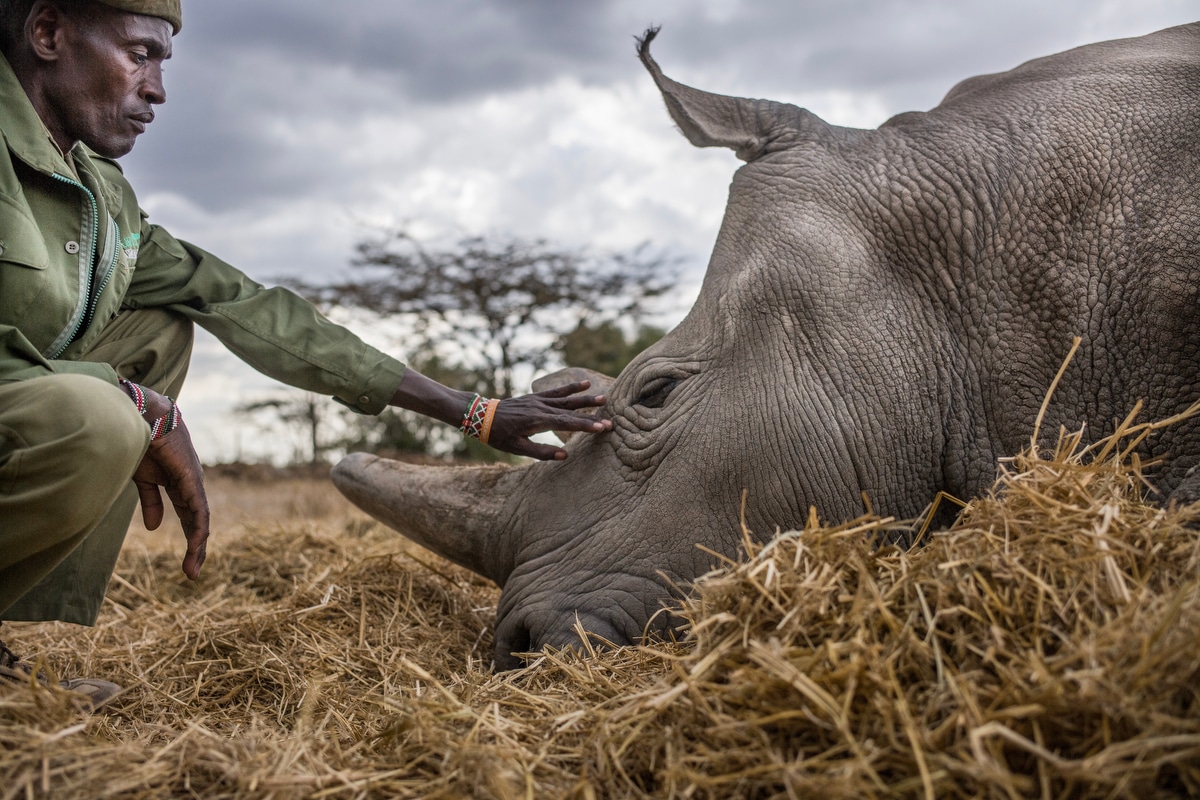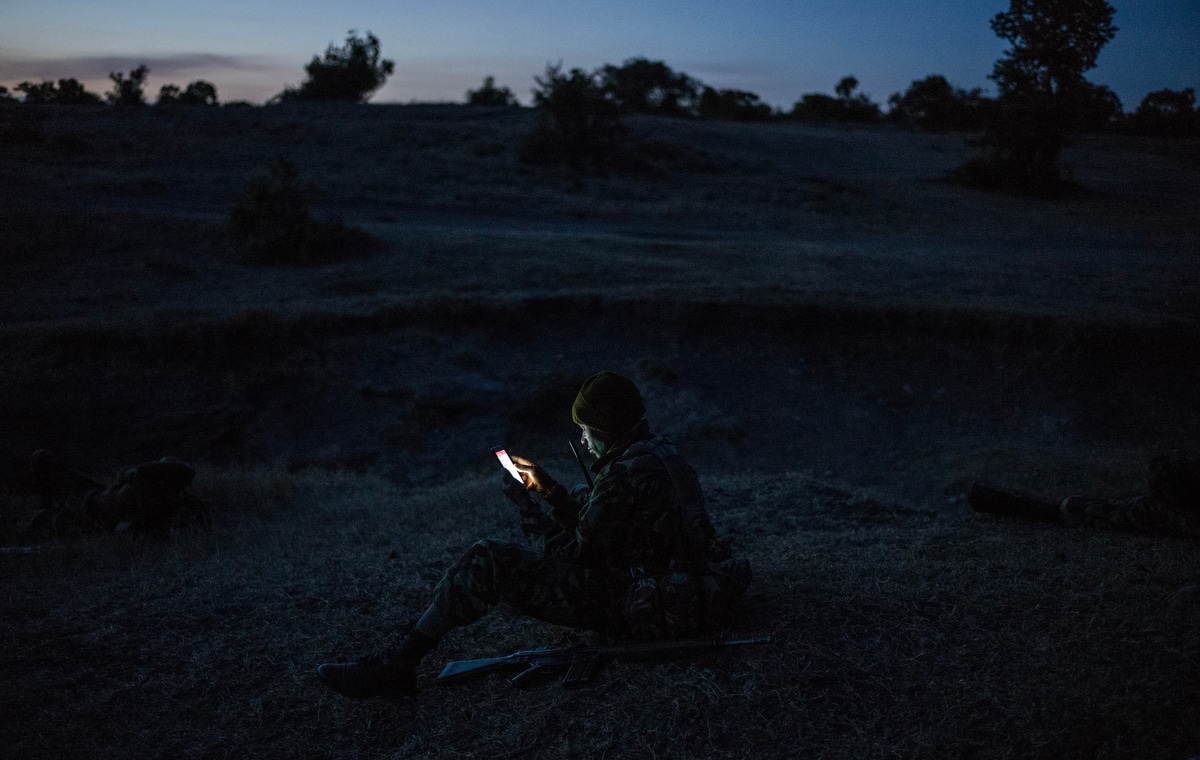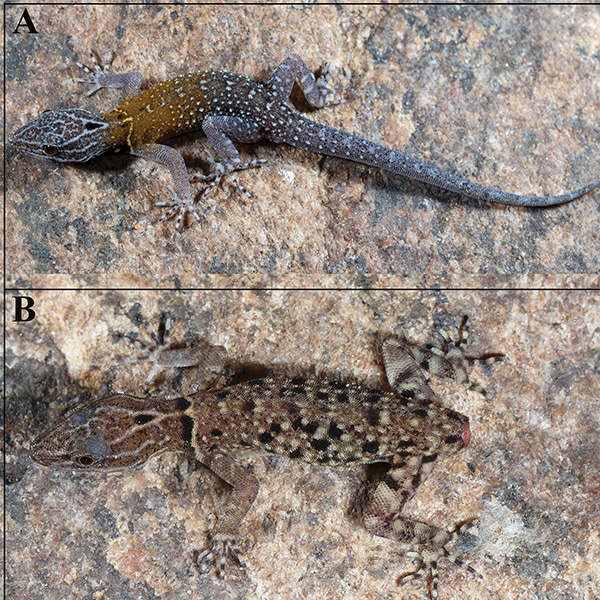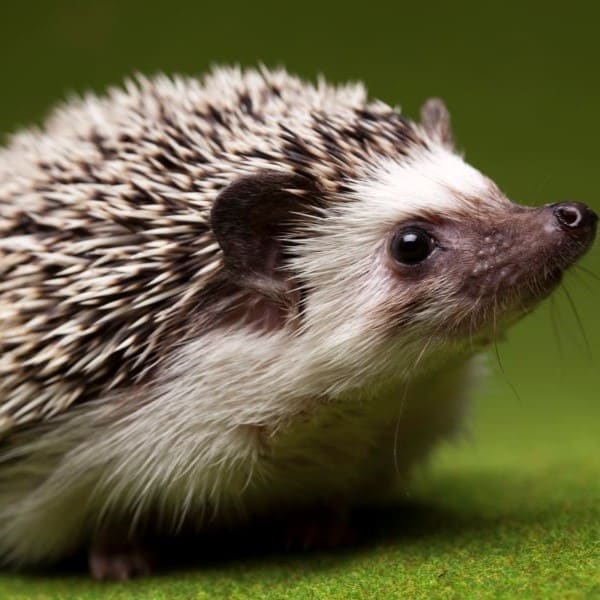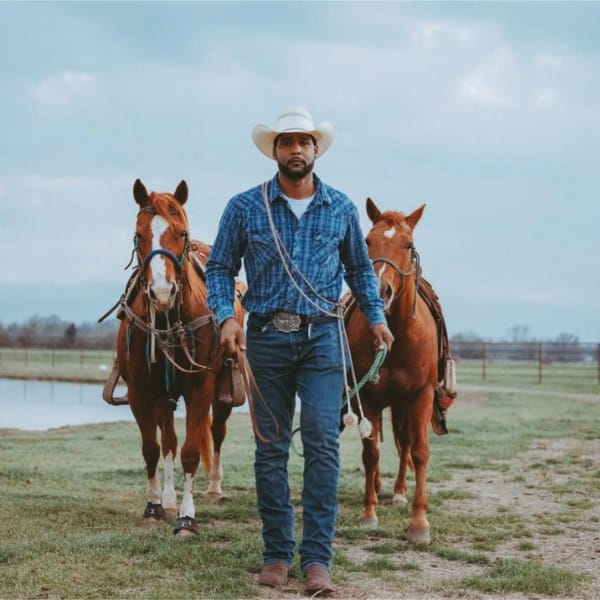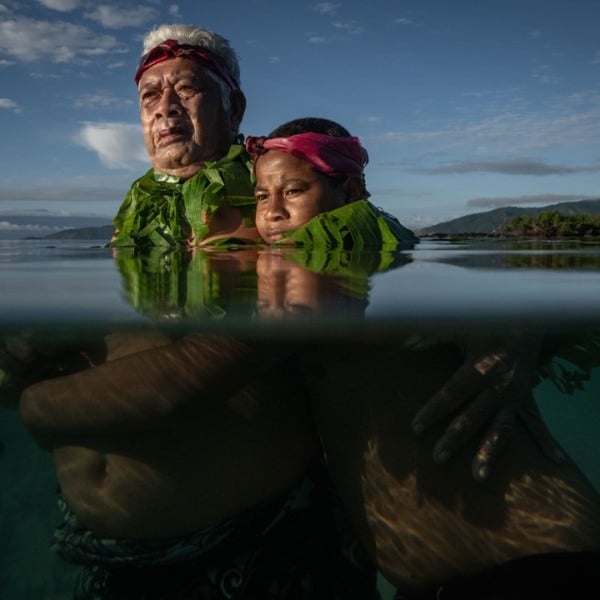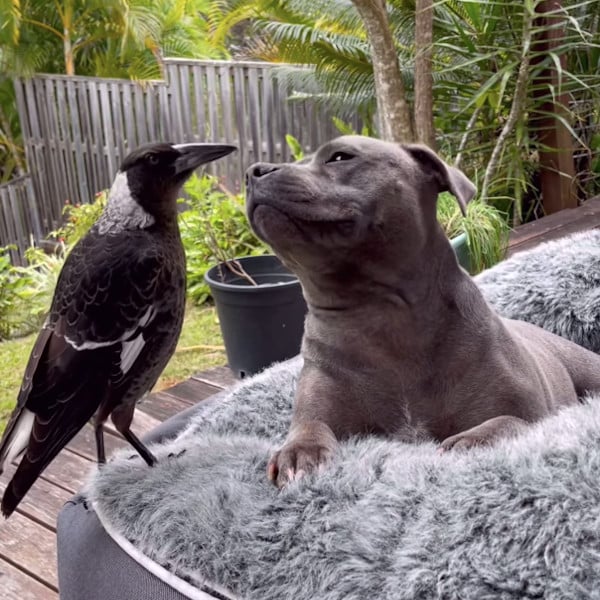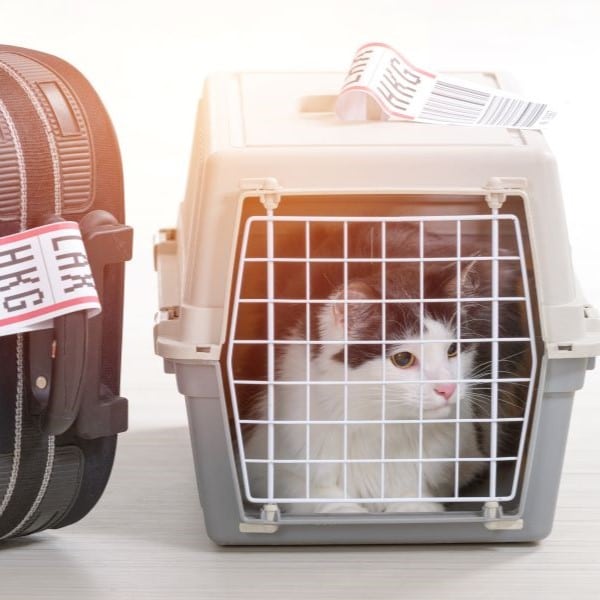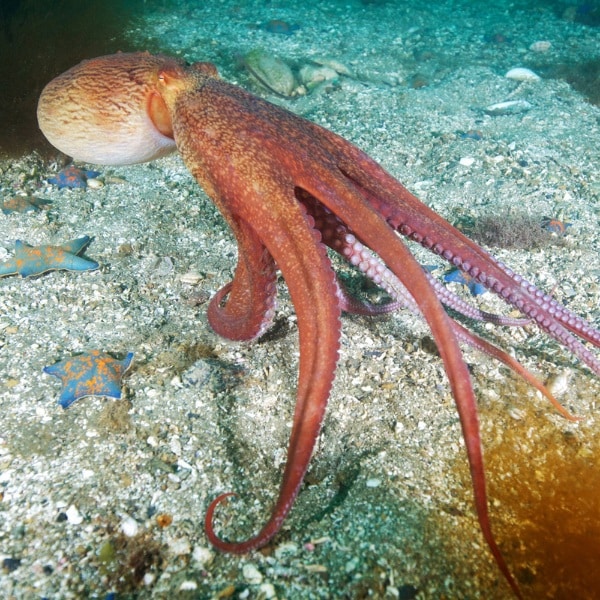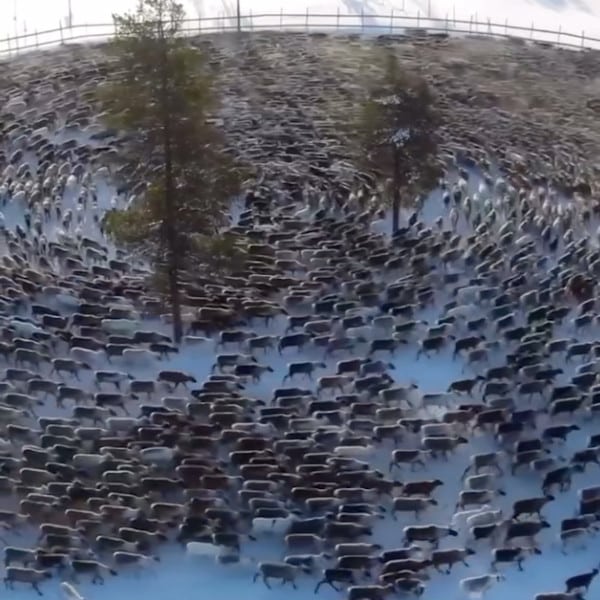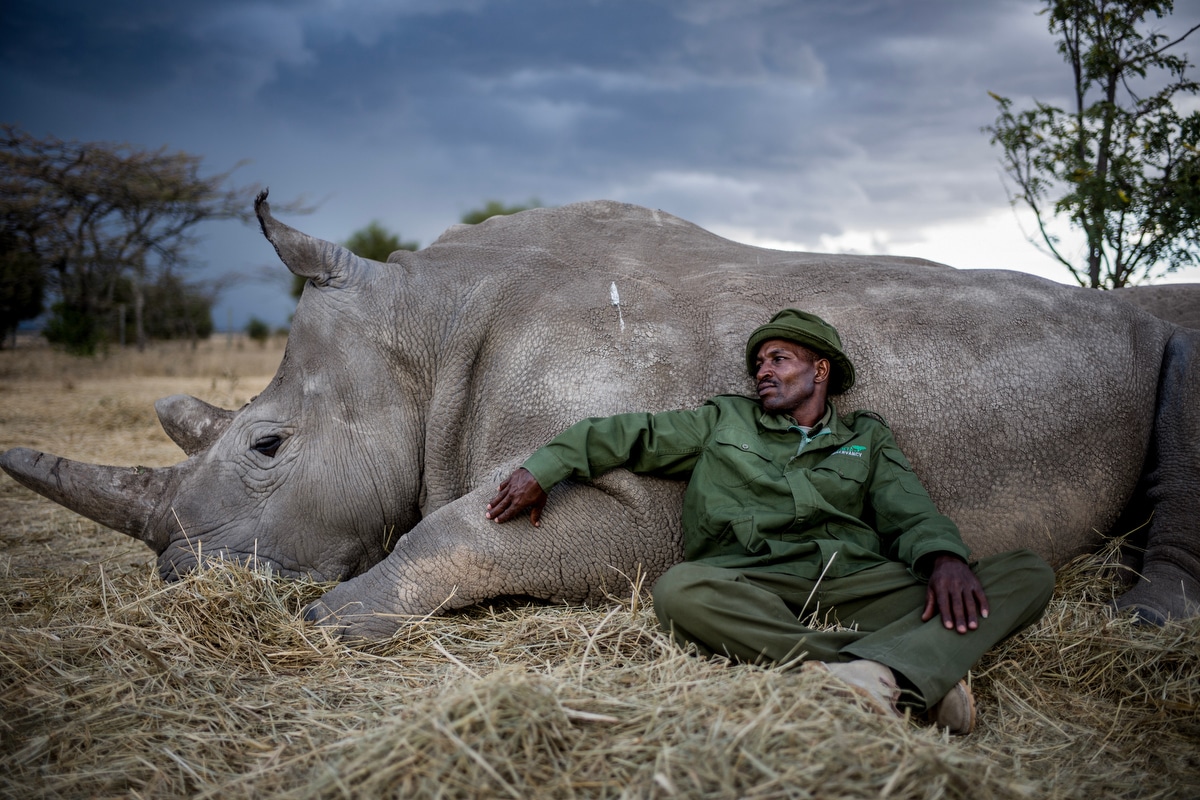
American photojournalist Justin Mott is using the power of photography to shed light on important stories of animal conservation. Mott's long-term project Kindred Guardians is a look at the men and women who dedicate their lives to saving wildlife. This personal project, which is entirely self-funded, had Mott hopping on a plane to Kenya in order to document the last two northern white rhinos in existence.
The whole world was saddened when word spread that Sudan, the last male northern white rhino had passed away at the Ol Peteja Conservancy, effectively ending the subspecies. He left behind two females—Fatu and Najin—who continue to graze the same grounds that he walked. The mother and daughter rhinos are protected by a team of caretakers, who work around the clock to nurture them and protect them from poachers.
Mott spent a week at Ol Peteja, where he used his skills as a photojournalist to tell not only the story of Fatu and Najin, but also the professionals who take great risk to keep them safe. For Mott, this work is a way to give back and return to the roots of his photojournalistic work, which has included features in The New York Times, Forbes, BBC, and The Wall Street Journal.
We had a chance to speak with Mott about his career, his need to give back, and his experiences documenting animal cruelty. Read on for our exclusive interview and if you'd like to help Ol Peteja continue their work with the northern white rhinos, click here.
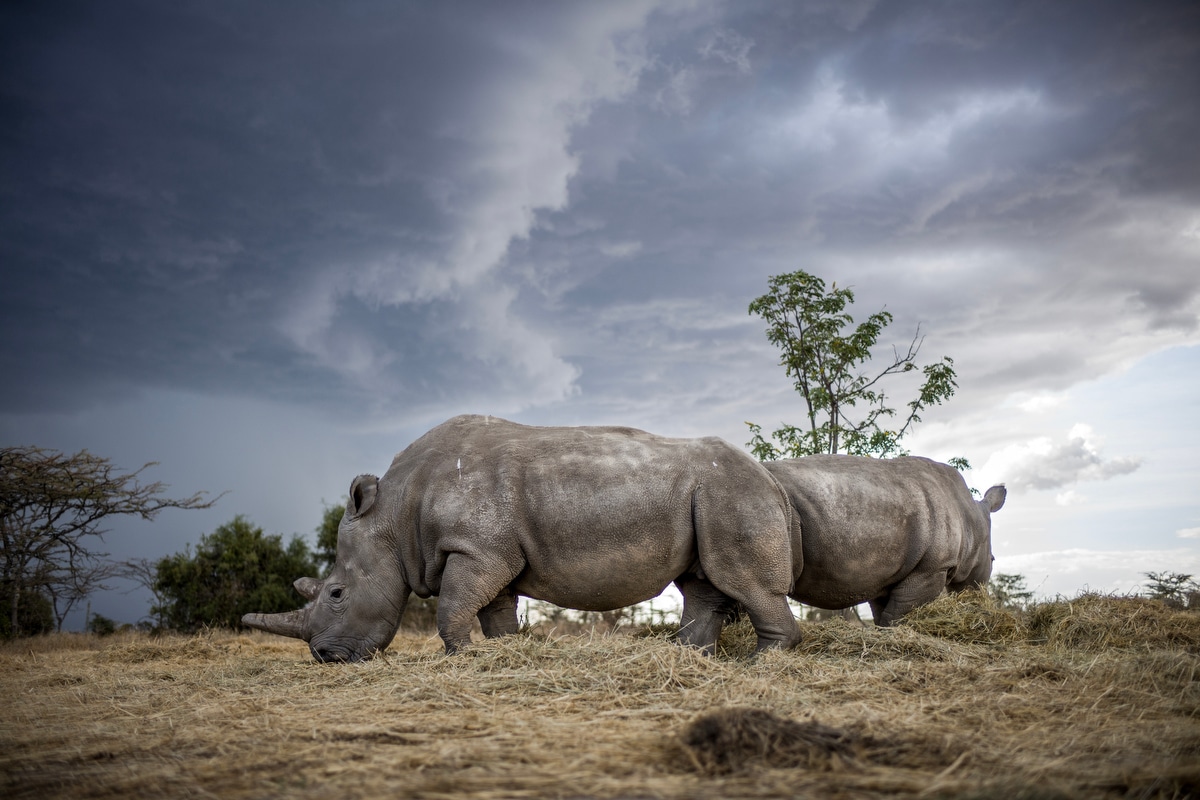
What first attracted you to photography and, in particular, photojournalism?
At first, it was just a way to get out of the classroom. I was studying journalism at San Francisco State University and a photojournalism class was a pre-requisite for my major. I was never happy sitting still in a classroom and listening to lectures. I’m the type of person who needs to be moving and interacting with people.
At that time in my life, I really didn’t understand the power of photography but I was enjoying the creative process of taking pictures and learning the craft. In my free time, I used to go to the bookstores and thumb through photography books of all kinds—fashion, documentary, landscape, etc. One day I came across the book Collateral Damage in Vietnam by Magnum photographer Philip Jones Griffiths. I’m not a crier, but that book made me weep. I can still remember sitting on the floor of Borders trying to hide my tears. I knew at that exact moment I wanted to pursue that type of work—stories that could have an impact.
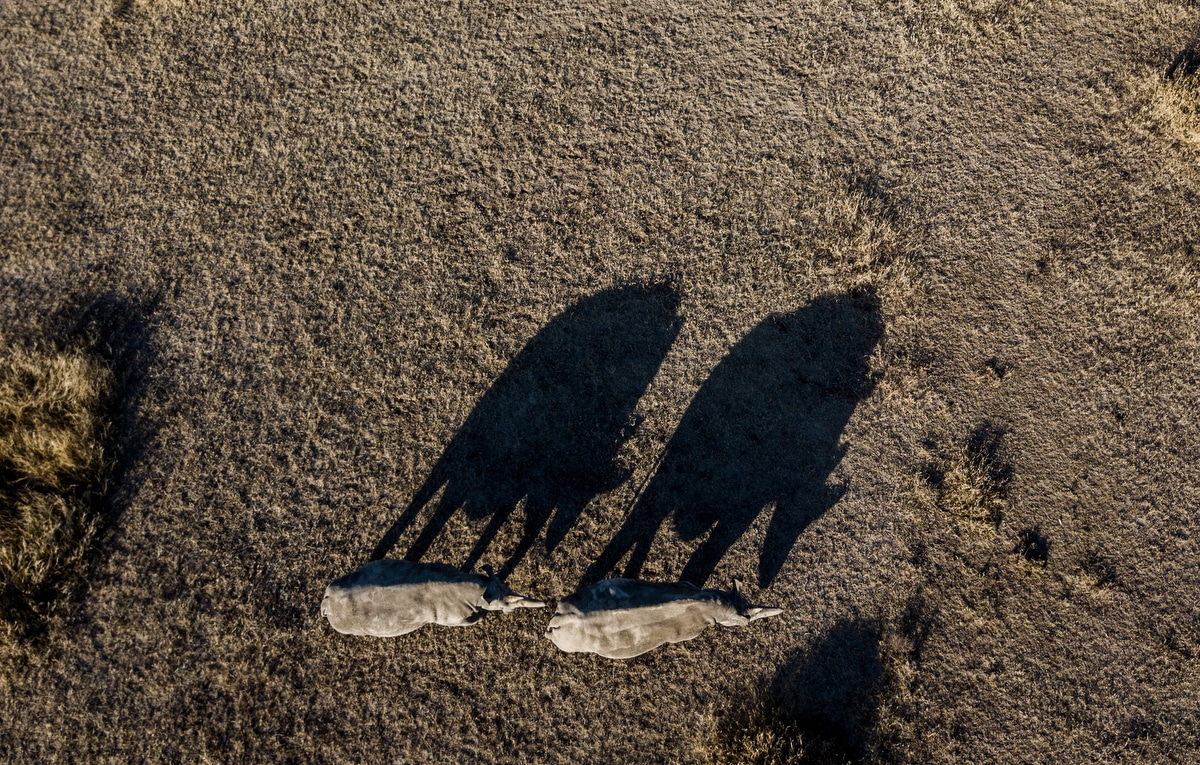
How did moving to Vietnam impact your creative work?
I moved to Vietnam before my career even started, with about one year of classes left before graduation. I had saved some money from my years bartending in the city and was willing to use my credit card and bet on myself that I could eventually make things work as a photographer. I wasn’t inspired shooting in the USA anymore; I wanted to learn new things and meet new people so I purchased a one-way ticket to Hanoi.
It turned out to be one of the best decisions I’ve ever made. I was able to fail and experiment, and discover who I was as a photographer. My personal project work during that time led to a string of assignments from The New York Times and eventually kick-started my career.
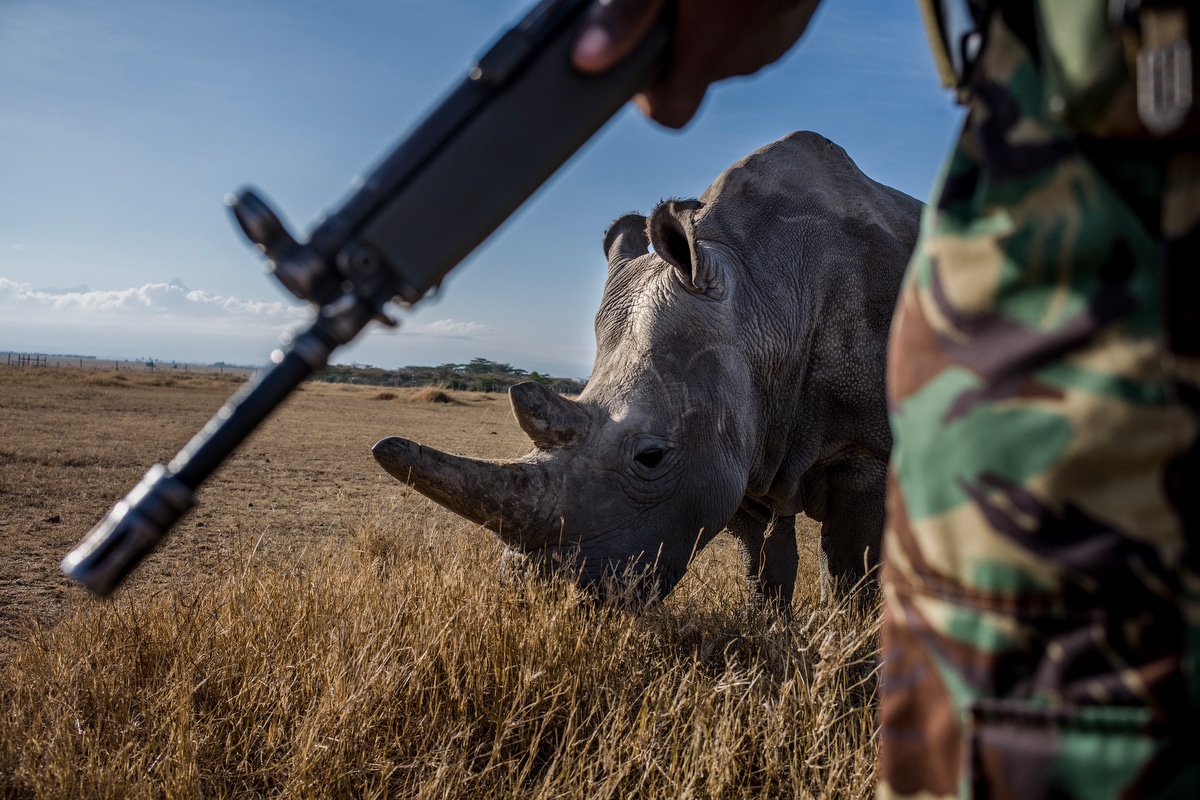
When did Kindred Guardians begin and what prompted you to undertake the documentation of these important stories?
I’ve loved animals since I was a little kid and I’ve always had sympathy for them. When I was a boy my dad allowed us to use pellet guns in the forest for target practice, but he always taught us to respect animals and not to shoot them. I can remember clearly his story about how he shot a robin in the chest when he was a boy and how sad and awful he felt afterward. I don’t even know if that story was real, but it stayed with me and I’ve always respected animals.
In my early days of living in Vietnam, I photographed a slaughterhouse for pigs and the sounds and sites are still emblazoned in my mind. I can hear their squeals and see their sad and desperate faces as they were brutally sent to their ultimate death. I can remember feeling so helpless and just so many emotions going on inside me, like hatred for mankind. I remember how miserable the experience made me feel long after that day and how it lived in my dreams for years to come.
After that experience, I cowardly hid from any forms of animal cruelty. I wouldn’t click on articles or any content that showed animal cruelty; I tried to block it out of my life. Sure, I did the occasional animal story, such as a rhino horn story for TIME Magazine and a story about pangolin poaching for CNN, but I turned down a story about dog meat because I didn’t think I could stomach seeing them executed. I’m not proud of that, but it happened, and I regret not covering it.
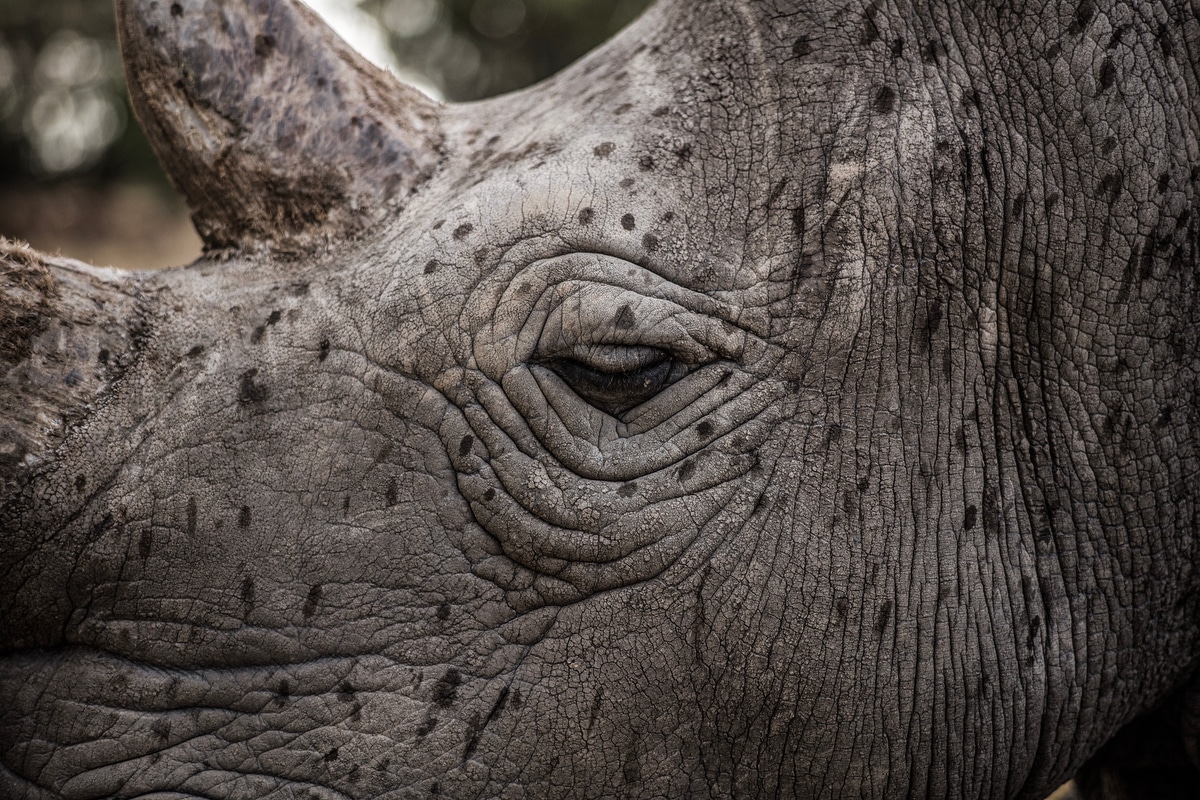
(continued) When I turned 40 last year I knew something was missing from my life. I knew I had to get back to doing stories that mattered to me and I was slowly starting to open myself up emotionally to learning about animal cruelty and to doing my part.
Oddly enough, it took following comedian Ricky Gervais on Twitter to get me back into thinking about animal cruelty again and to stop shielding myself from it. He is a big animal rights advocate and he’s just awesome and clever at using his skills as a comedian and his enormous following to publicly shame people harming animals and bring attention to animal rights issues all over the world. I love and respect that man.
The timing of turning 40 and wanting to get back to personal work, as well as seeing how someone like Ricky Gervais could use what they do best to help animals led me to start formulating my own ideas on how I can contribute. I’m not comparing myself to him at all and I’ll never have his reach, I just mean I wanted to use what I do best—photography—to help animals.
I started imagining doing a long-term project photographing people around the world who dedicate their lives to animal welfare. I’m impulsive, so I started to research stories ready to fly off wherever I could get great access to an intriguing story.
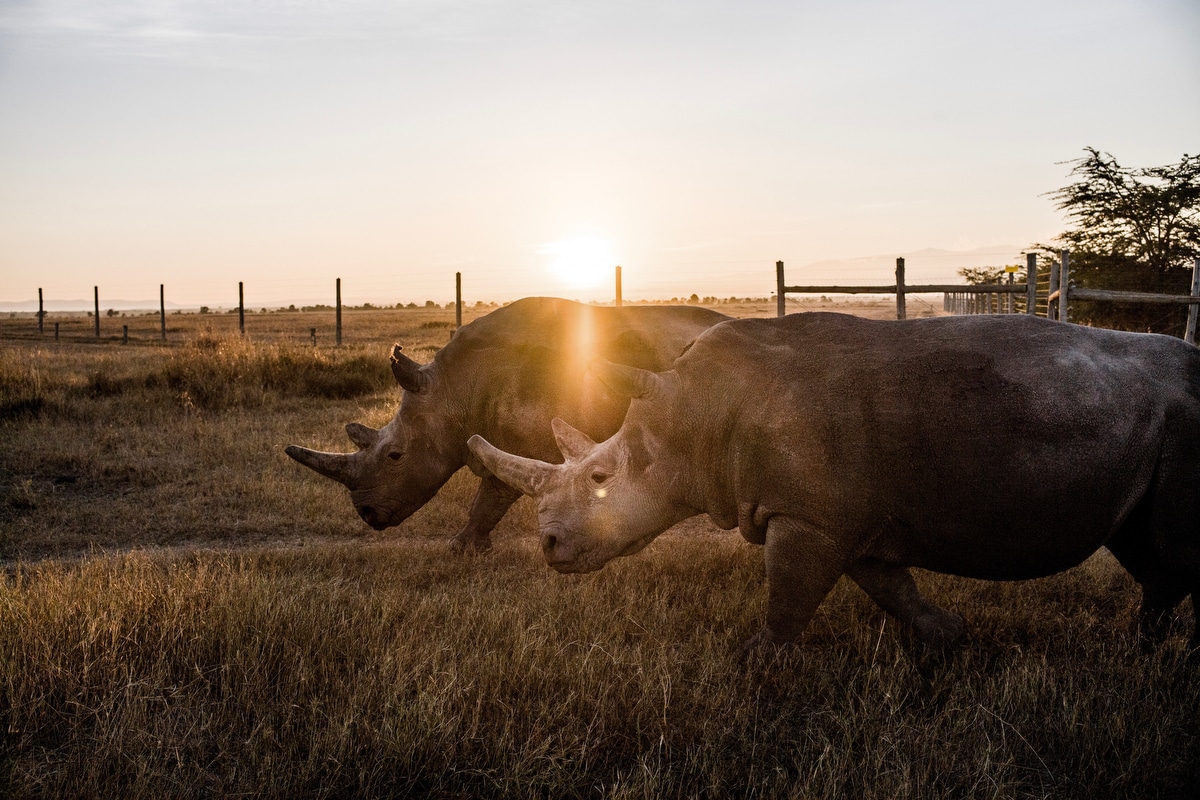
In particular, what brought you to the Ol Pejeta Conservancy?
Last year, I read a story in National Geographic about the last remaining male Northern White Rhino at Ol Pejeta who had recently died. I saw the powerful images by Ami Vitale, a photographer who I respect enormously, and I knew I wanted to pursue similar work.
The story about the caretakers and guardians of the remaining female white rhinos had been done before by an amazing photographer, but at the same time, I had my connection to rhinos from a past story about rhino horn consumption in Vietnam, I knew I could do it my own way, and it fit into my larger project. Living in Vietnam, I also felt I could use my network to raise awareness of the rhino’s plight within a country that is one of the largest consumers of their horn.
I knew this was a perfect story to launch my project, so I reached out Ol Pejeta, explained the purpose of my story, and a month later I was on a plane to Kenya.
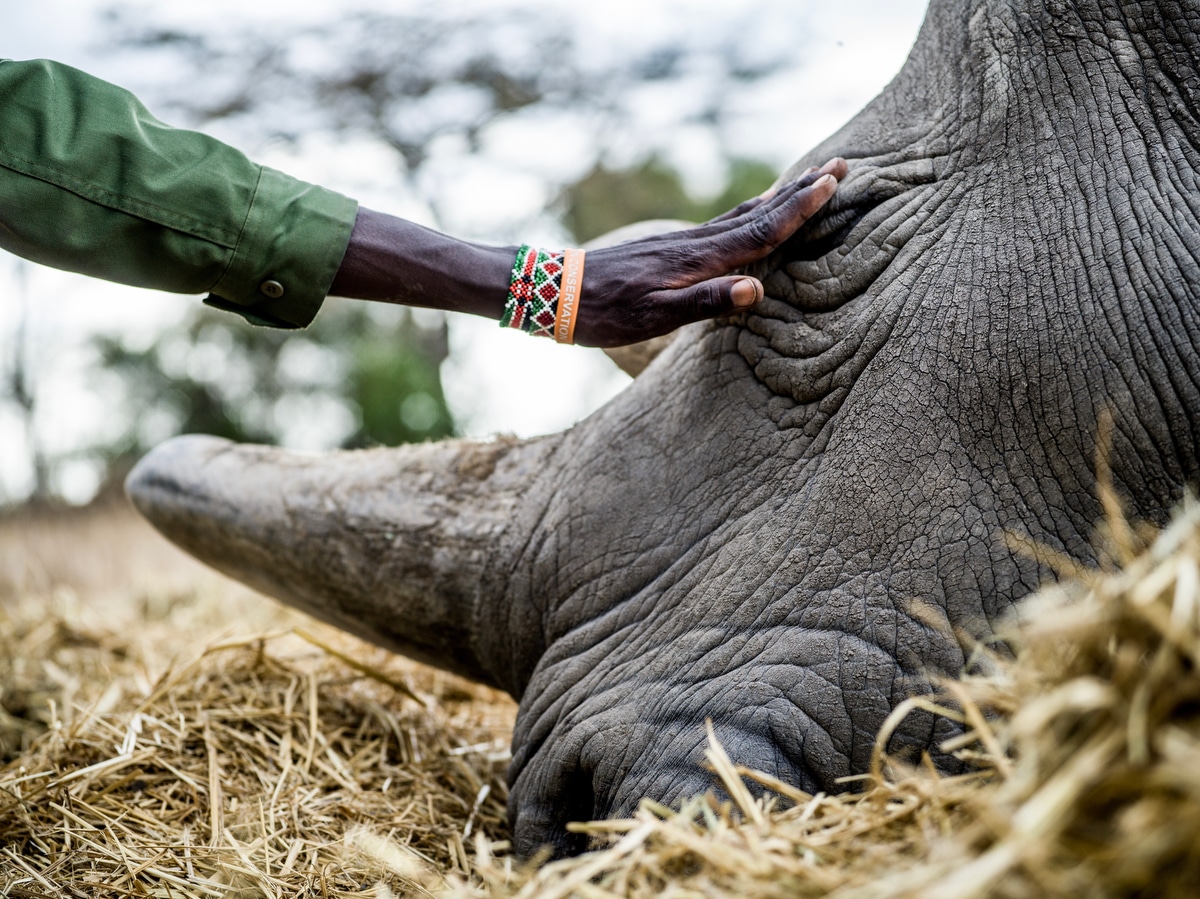
How long did you spend with the rhinos and caretakers, and what surprised you most about their bond?
I was there for one week. I started my days just before sunrise and would hang around until into the evening as the rhinos went to sleep. I spent most of my time with the caretakers, but I also went on patrol with the armed guards into the bush.
For the caretakers, I was so impressed with their love for the rhinos and how they can just walk right up to them and scratch them behind the ears. Peter, one of the caretakers, told me as he pet Fatu behind her ear and then her hind leg, “it calms her.”
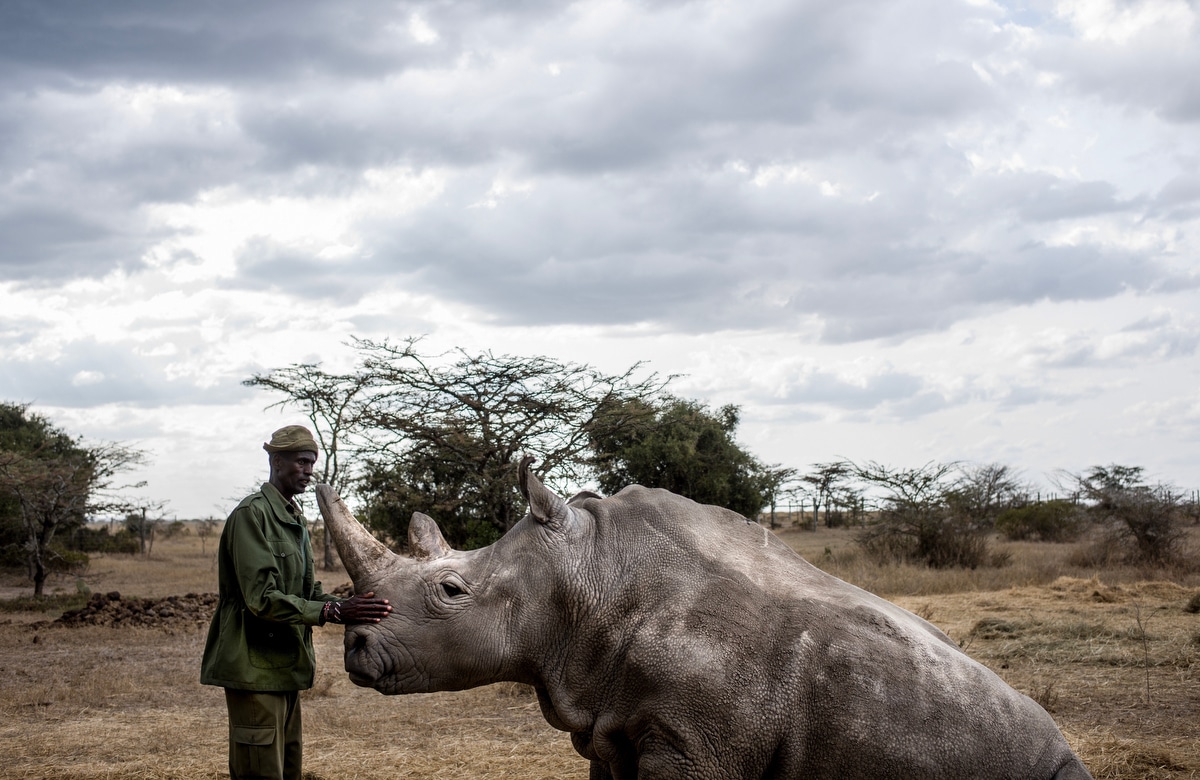
Did you have any preconceived notions of how your time would unfold? And if so, how did the experience meet those expectations?
I’m not a traditional wildlife photographer, in fact, I’m not really a wildlife photographer at all, so I don’t use long telephoto lenses and a lot of equipment. My project is all about intimacy between my humans and animals so I restrict myself mainly to a fixed 35mm lens, forcing me to get close to capture intimate moments between people and animals.
I was worried that the rhinos wouldn’t let me get close to them, but they were at ease around the caretakers and they allowed me to get close to them every day.
Fatu and Nain do live with a Southern White Rhino named Tauwo. She acts as their protector, a security guard really. Every so often she would come over to me and inspect me, but for the most part, I could get very close to them.
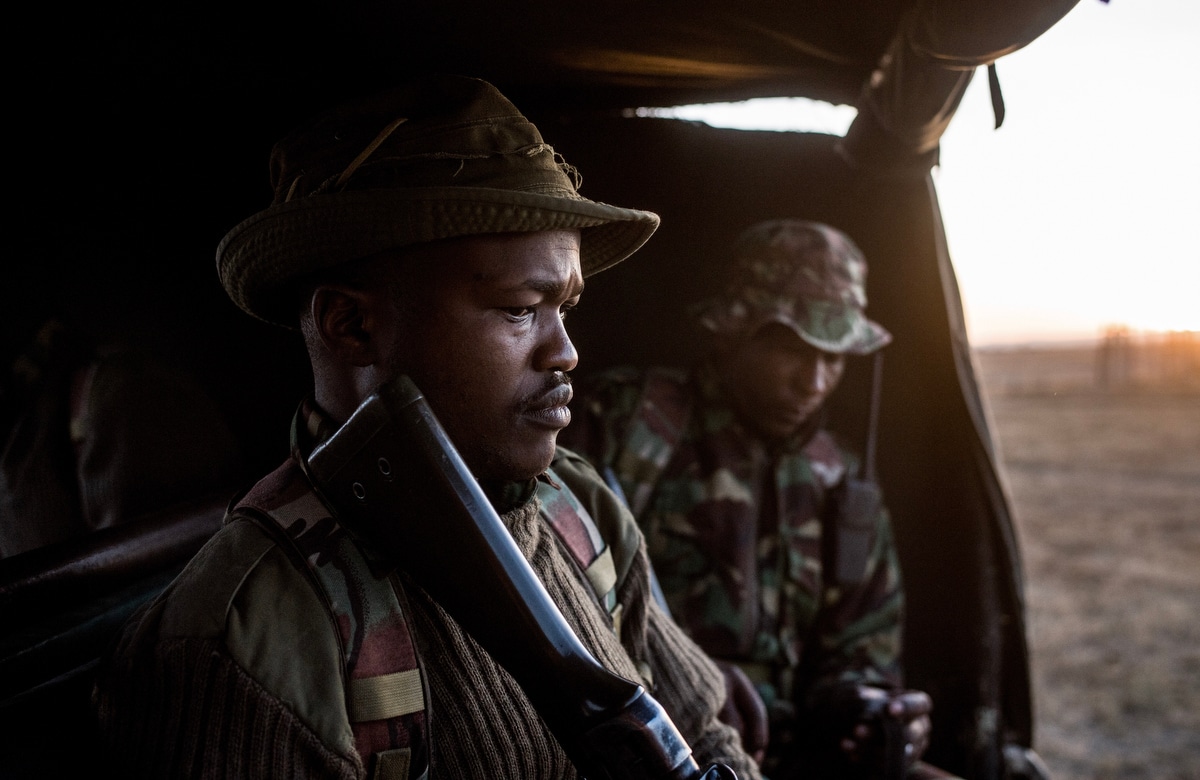
Can you share a bit about the dangers the caretakers endure to protect these animals?
I spent the day with a team of the NPR (National Police Reservists) on patrol throughout the park. At sunrise, we walked past fresh lion tracks and stumbled upon a wild rhino with her calf. In addition to the danger of poachers, these men spend the night camping and walking amongst deadly animals.
In the evening, one of the guardians opened up to me about an incident that happened in early 2018. They were fired upon by three poachers during their patrol. In self-defense, they killed all three of them. It just shows you how deadly their job can be and how much these guardians are willing to sacrifice.

How were you received at the Conservancy and, as a photojournalist, how do you go about creating the comfort level you need to get the photographs you are after?
I believe in being upfront with people. From the beginning, I communicate the kind of access I’m looking for and how long I’d like to spend with people each day. It can be awkward having a stranger follow you around for 14 hours a day for a week. I used a very small quiet camera and eventually people just get used to being around it and they go back to going about their day.
The caretakers are very unified in their love and compassion for the rhinos so they were extremely patient and generous to me with their time.
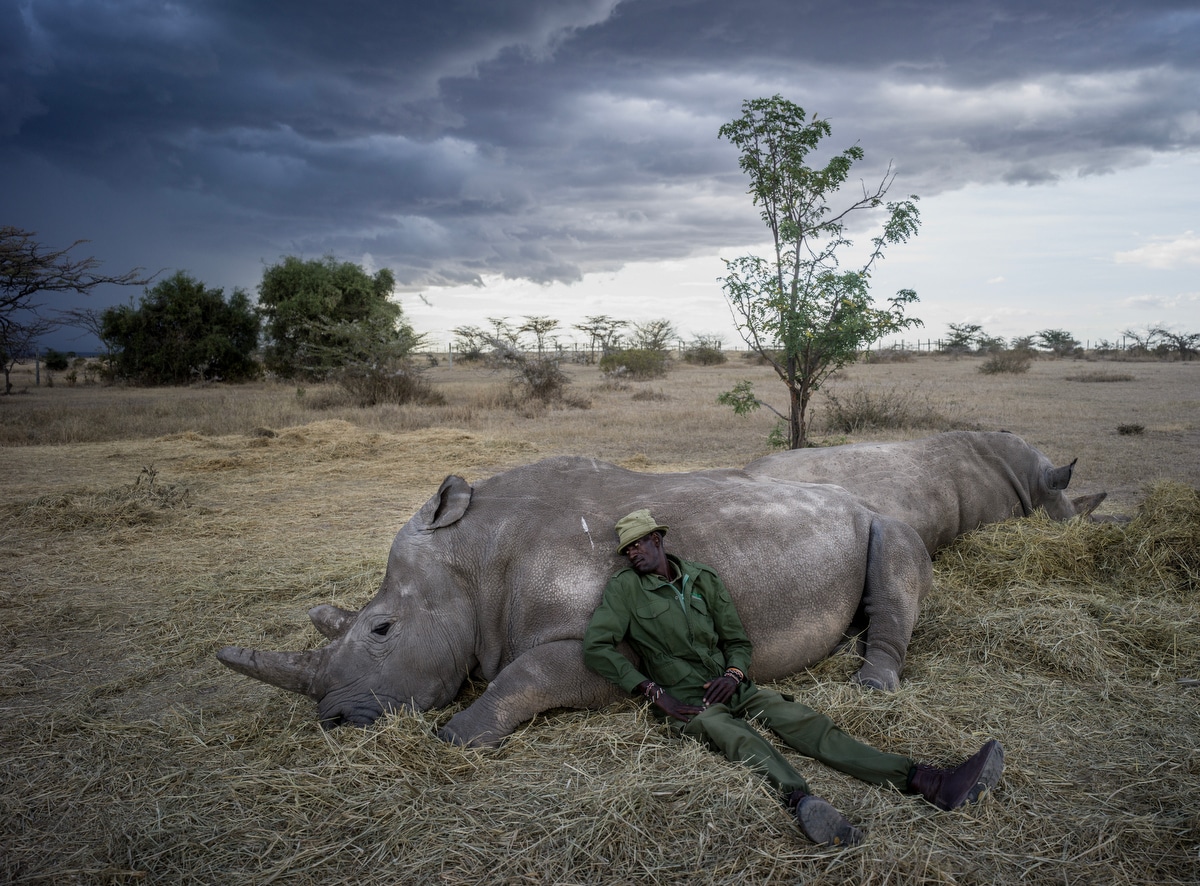
Was there a particular moment or experience at the Conservancy that stood out for you?
The first time I’d touched a rhino was when I went undercover posing as a buyer of rhino horn at a black-market dealer’s home in order to get photographs. I remember feeling so much hate for that man and for mankind as I held that severed horn in my hand.
When I arrived at Ol Pejeta and I touched the horn of Najin, it was just so special. I was sad and happy at the same time—sad about their plight but happy to see a rhino in person and feel it alive.
Another big moment for me was when I passed through the gates of Ol Pejeta and it really just hit me that I was getting back into doing the work that I’m really passionate about—work that has meaning to my soul.
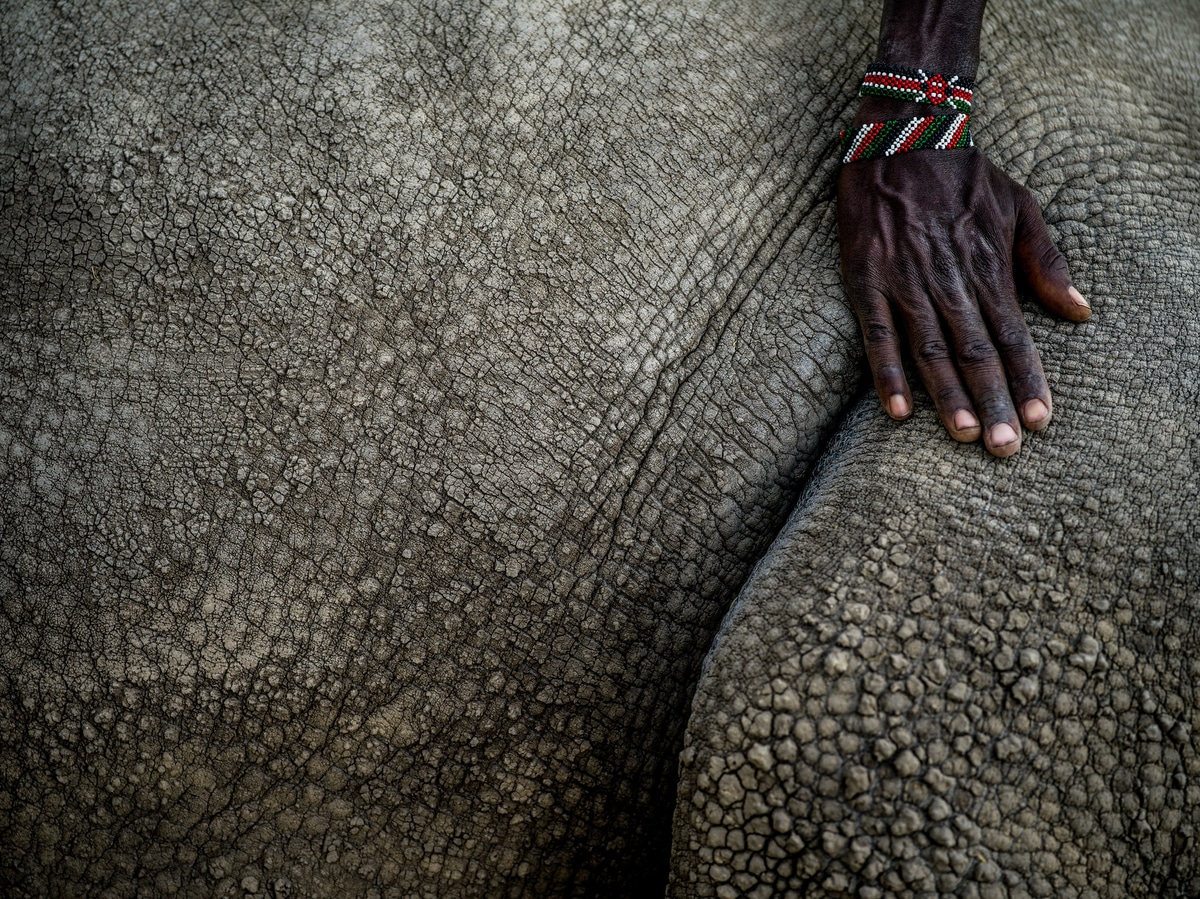
What do you hope the public takes away from the work that happens at the Conservancy?
I want people to celebrate the tenderness, bravery, and dedication of the caretakers and guardians of the rhinos. I hope people have sympathy for these beautiful animals and their plight. I wish my images can humanize them in a way that we can all relate to and encourage people to act, speak out, and change their ways and actions towards animals.
Individuals can help, but to make a real impact we need governments to get behind animal causes, even when it’s not popular or profitable, but it’s the right thing to do. It’s obvious countries like Kenya are doing what they can to protect wildlife but the governments of the consumer countries need to get on board and do their part as well.
I ask a lot, but I’m an optimistic person and I haven’t lost all faith in mankind. I hope my images have an impact on people to respect these amazing animals—all animals really—and hopefully we can get people to stop poaching and consuming them.
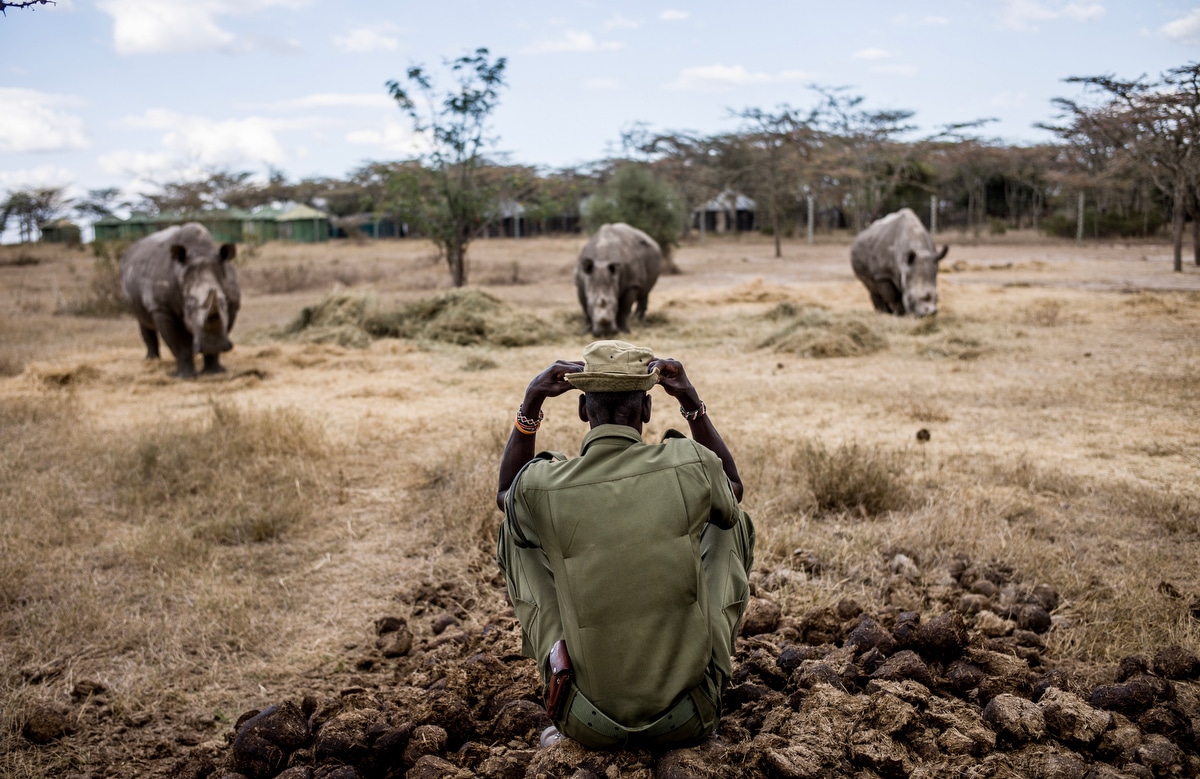
Why do you think it's important for photographers to help shed light on these social issues?
It’s difficult for me to say what others should do, but for me, it was time to get back to doing work that has meaning to me, even if at times it was hard to face these emotions.
You just never know who can you touch or influence with your images or your story, so you just have to try. I recently finished this chapter of the project and already I’ve been flooded with kind emails. One man even offered to donate a very generous sum of money to help with Ol Pejeta’s IVF project and that just makes me so happy. This project is showing me the best and worst of mankind.
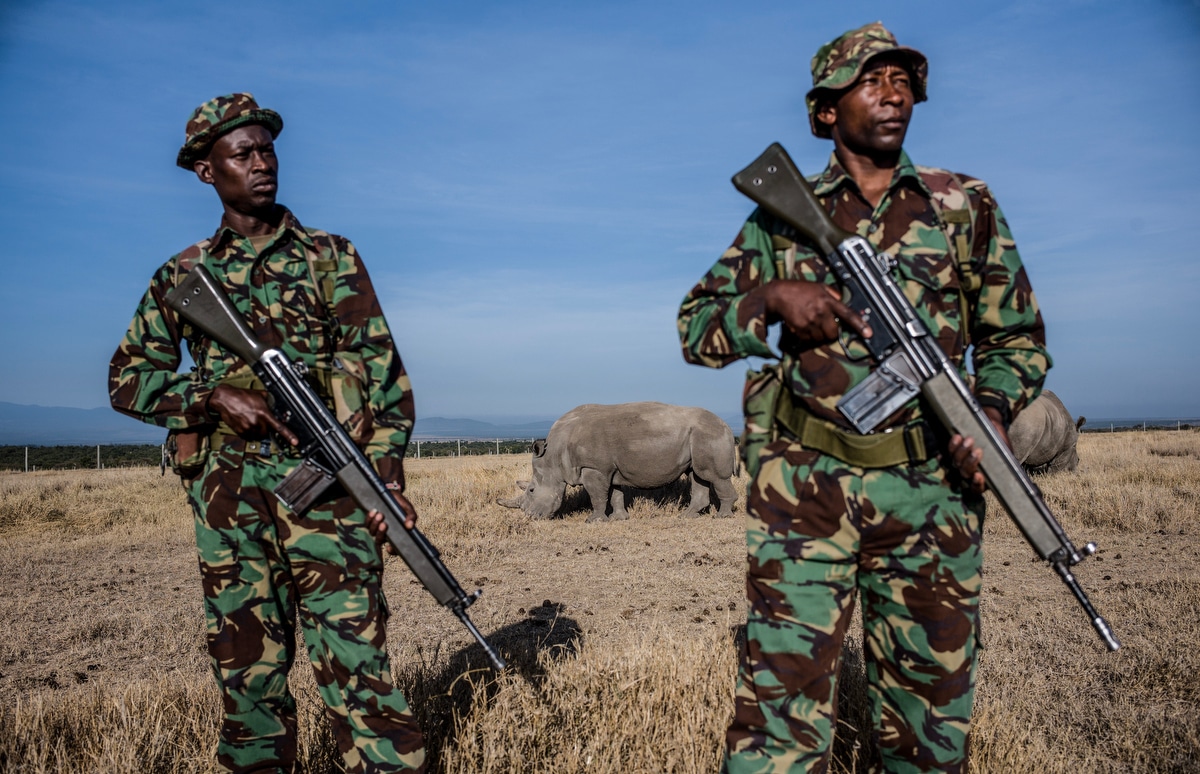
What's next?
I have so many stories for this project that I want to pursue, it’s a matter of what I can budget at this point as I’m currently funding the project myself. I’m trying to line up stories about orangutans, gibbons, elephants, and a dog shelter in Thailand. If you are reading this and know of an amazing story about a person dedicating their lives to animal conservation and animal welfare please feel free to email me.
